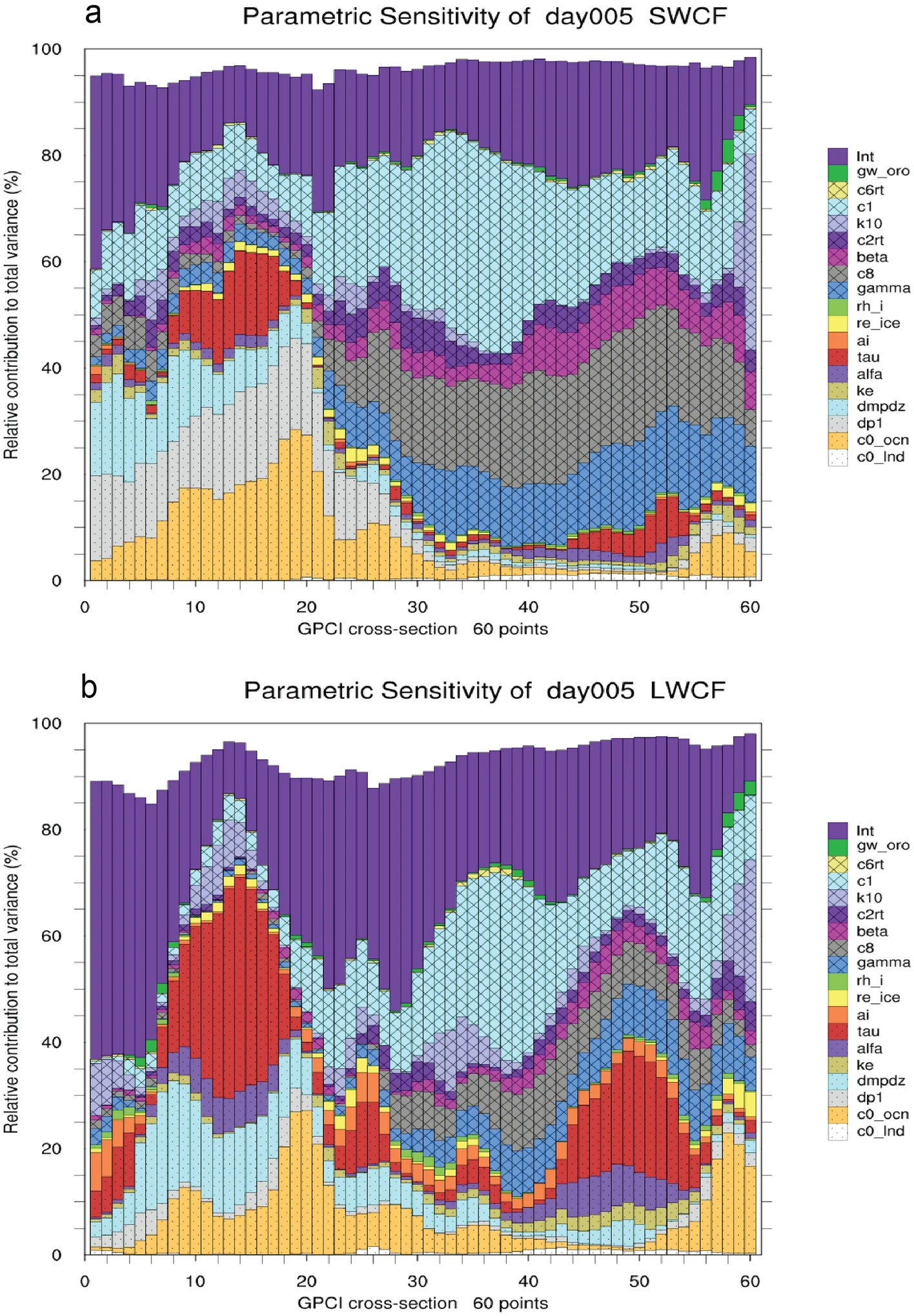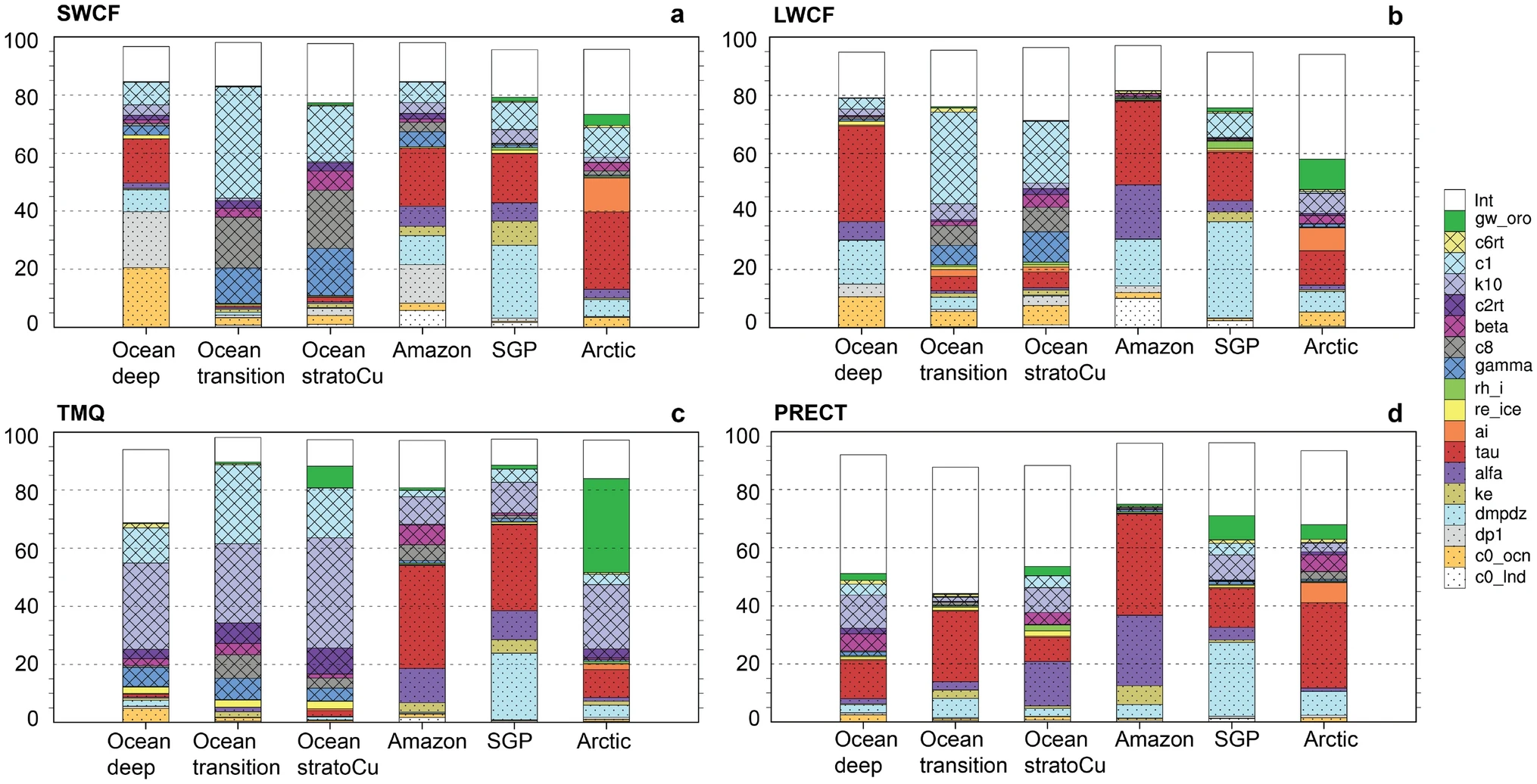Region and Cloud Regime Dependence of Parametric Sensitivity in E3SM Atmosphere Model

Clouds play a critical role in regulating the energy balance and hydrological cycles in the atmosphere. (Photo by Pexels.com)
Analysis of contributions from various parameters improves understanding of cloud physics in E3SM and sharpens the understanding of atmospheric model behavior and physics at regional scale.
The Science
The Department of Energy (DOE)’s Energy Exascale Earth System Model (E3SM), including its atmosphere model (EAM), incorporates many relatively new features. In a prior investigation, a comprehensive parametric sensitivity analysis for the EAM was performed based on short, perturbed parameter ensemble (PPE) simulations, focusing on global mean climate features and metrics. While parameter values in global climate models are typically assigned constant values across space and time, E3SM’s response to parameter perturbations can vary by region and climate regime. This underscores a more nuanced understanding of EAM model behaviors and physics at the regional scale and process level. Researchers at DOE’s Pacific Northwest National Laboratory (PNNL) demonstrated a new analysis of how parametric sensitivity within the EAM varies with regions and cloud regimes. This study proposes a systematic and computationally efficient approach to assess and enhance model accuracy at the regional scale.
The Impact
Modeling water cycle processes, including clouds and precipitation, at the regional scale presents a formidable challenge for global Earth system modeling. This study offers a comprehensive insight into the behavior of the EAM, enhancing our understanding of how the model responds to parameters and their interactions. The employed short ensemble simulation strategy also yields valuable insights into optimizing the use of DOE’s leadership computing facilities for exascale Earth system modeling. The results of this study furnish valuable information regarding parametric sensitivity across different climate regimes in the EAM. This, in turn, improves our comprehension of the treatment of model physics concerning adjustable parameters and their interactions, thereby guiding future parametrization development for climate models to reduce uncertainties in projecting future changes in the water cycle.
Summary
Enhancing a model’s predictive capability necessitates fine-tuning to optimize its representation of physical processes across diverse regions and climatic regimes. In this study, using 256 short PPE simulations and a sensitivity analysis framework, the researchers identify parameters that cause the largest sensitivities over different regions (Fig. 1) and compare the model responses in fast atmospheric processes to the parameters across different cloud regimes for several important cloud-related fidelity metrics. Their findings reveal that certain parameters have contrasting effects on cloud forcing in mid-latitude versus tropical land regions. They also explore how parametric sensitivity changes as stratocumulus transitions to shallow convection and to deep convection over the ocean and investigate how the parametric sensitivity evolves with prediction length (Fig.2 ). Detailed interpretation of the spatial dependence of parametric sensitivity is provided. This study improves process-level understanding of cloud physics and parameterization and provides insights for developing more advanced regime-aware parameterization schemes in a global climate model.

Figure 2. Parametric sensitivity of shortwave (SWCF) and longwave (LWCF) cloud forcing along the GEWEX Pacific Cross-section Intercomparison (GPCI) transect from deep convection on the left to cumulus and further transition to marine stratocumulus on the right, for prediction on day 5 (day005). Point 0 represents the SW end of the transect, in the tropics, and Point 60 represents the NE end, offshore of California.
Publication
- Qian, Yun, Zhun Guo, Vincent E. Larson, L. Ruby Leung, Wuyin Lin, Po-Lun Ma, Hui Wan, et al. 2023. “Region And Cloud Regime Dependence Of Parametric Sensitivity In E3SM Atmosphere Model”. Climate Dynamics 62 (2). Springer Science and Business Media LLC: 1517-1533. doi:10.1007/s00382-023-06977-3.
Funding
- This work was supported by the Earth System Model Development program area of the Department of Energy, Office of Science, Biological and Environmental Research program.
Contact
- Ruby Leung, Pacific Northwest National Laboratory
This article is a part of the E3SM “Floating Points” Newsletter, to read the full Newsletter check:



